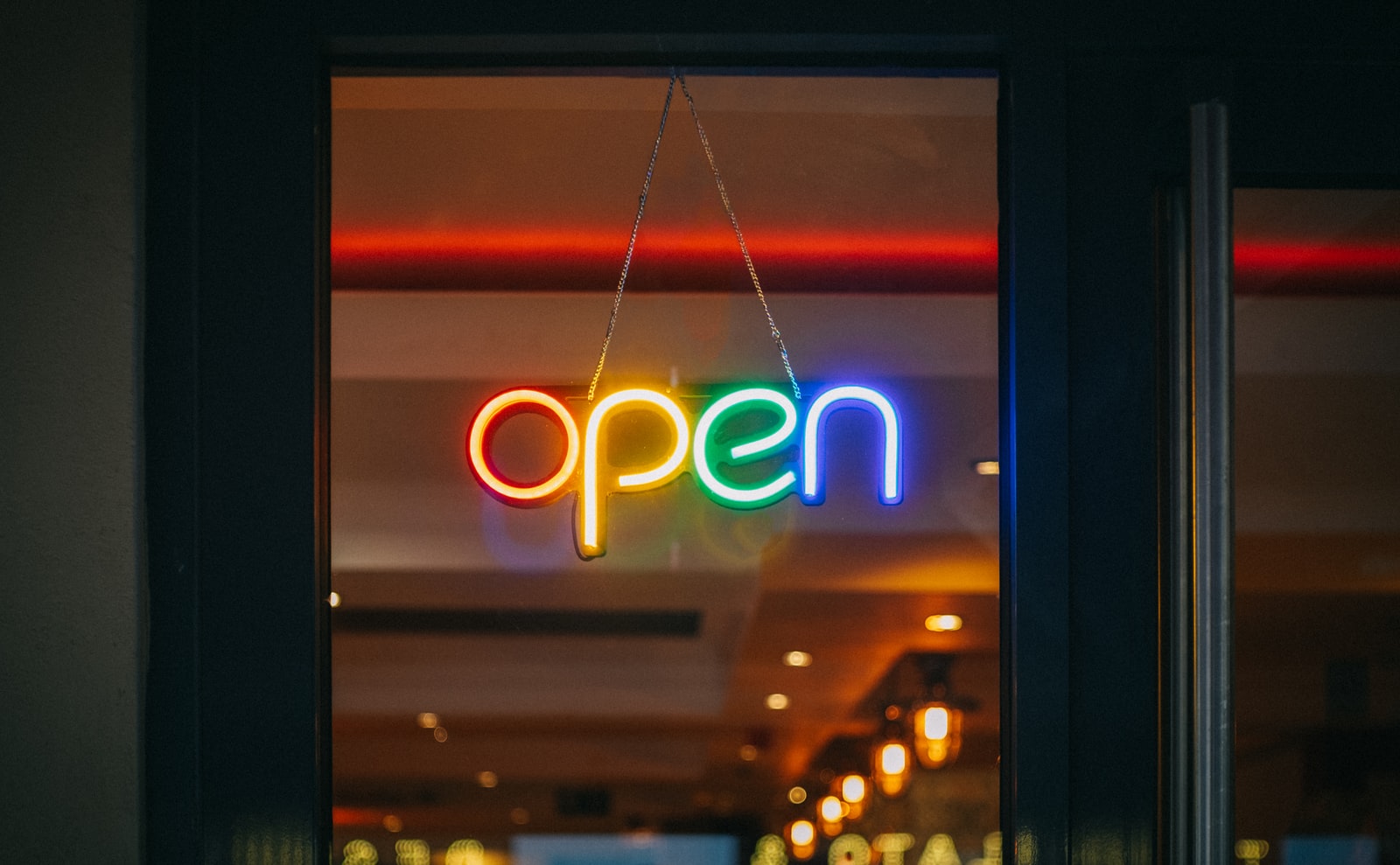I quite enjoyed this week’s readings! Open pedagogy is always something I’ve been interested in.
The first reading, Open Pedagogy, reaffirmed some things I already knew, but also taught me some things as well. One thing I learned from this reading was the 5 R’s that are characterized by OER’s; Reused, Retained, Redistributed, Revised, & Remixed. The quote, “As conversations about teaching and learning developed around the experience of adopting and adapting OERs, the phrase “Open Pedagogy” began to re-emerge, this time crucially inflected with the same “open” that inflects the phrase “open license.”” got me thinking about how OER’s can be adapted with an open pedagogy lens. I think OER’s can always and should always be adapted to the students specific needs. This includes allowing students to see themselves represented, consider socioeconomic status, consider learning needs & development, culturally responsive teaching, and more. The article later gets into specifics about this using the term OEP (Open Educational Practices). This reading also discusses the issue of textbook access, stating that 54% of those in BC can’t afford to purchase at least one required textbook. This emphasizes the importance of using OER’s as an alternative to textbooks because it will directly impact students’ ability to be successful in higher education. However, this raised a few questions for me. Some students (like myself) prefer to have the physical textbook rather than a virtual one. To me, my eyes get tired when reading from a computer screen and I have a hard time retaining the information. Of course, physical textbooks cost money but if we want to talk about access and open education, then free textbooks should be apart of that. Further, the use of OER’s instead of textbooks made me wonder about students with limited internet access. What if a student needs to access information from the text at home but can’t because they do not have internet access? Or, what if a student doesn’t even have access to a computer? This is where I think various options need to be offered.
The Digital Redlining, Access & Privacy reading provided some interesting information as well. This reading made me reflect on my privilege because I was not aware digital redlining was an issue at certain institutions. What continued to stump me about this reading was why not block specific websites (sites that may cause viruses or contain inappropriate content that is not conducive to research) instead of sensitive words? Especially in a higher education setting? Perhaps this is slightly missing the point because it’s about these institutions blocking certain information from students, not how or what they are blocking. This quote stating, “The modern filter not only limits access to knowledge, but it also tracks when people knock against these limits. In this environment, curiosity looks a lot like transgression.” was shocking to me. Comparing the last reading about open education to this one shows polar opposite differences. Limiting access to knowledge and how it is attained is inhumane in my opinion. The whole point of open learning is so it is accessible to everyone and I’m not sure I understand who benefits from this digital redlining.
Lastly, the Learning Spaces reading was really useful. I really enjoyed how this reading gave real suggestions and examples to support Indigenous learning spaces. I often find that a lot of readings on Indigenous education tell you how important it is to support Indigenous students and weave Indigenous knowledge into your curriculum, but it doesn’t ever actually tell you how to do that. Of course as a settler it is my responsibility to educate myself and become comfortable with being uncomfortable but having solid examples really helps to ensure I’m on the right track. The design principle’s that are highlighted in this reading reminded me of the First People’s Principle’s of Learning. When I first learned the FPPL’s last year, I wasn’t given a lot of context behind them so I threw whichever ones I thought aligned the most on to my lessons. This is something I deeply regret because I was treating the FPPL’s as a ‘requirement’ that I had to fulfill, not as an act of reconciliation. My history professor introduced me to this site which gives an explanation and context behind each principle. This made me realize some principles I was putting on my lessons didn’t even really match, they just sounded like they matched. This site completely changed my view on the FPPL’s and I am much more considerate of which principles I am including in my lesson.
Mays, E. (Ed.). (2017). A guide to making open textbooks with students. Rebus Community.
Gilliard, C., & Culik, H. (2016, May 24). Digital Redlining, Access, and Privacy. Common Sense Education.
Kral, I. & Schwab, R.G. (2012). Chapter 4: Design Principles for Indigenous Learning Spaces. Safe Learning Spaces. Youth, Literacy and New Media in Remote Indigenous Australia. ANU Press. http://doi.org/10.22459/LS.08.2012





July 19, 2022
First off, thanks for sharing the FPPL site. That isn’t a topic I am familiar with in Saskatchewan, but I reviewed it and it looks very relevant. When you look at the principles, do you see ways that open pedagogy could work to achieve them? Do you see any ways that open pedagogy works counter to the principles?
As far as digital redlining goes, I would focus more on the idea that unless you are staff at or enrolled as a student in an elite university, you don’t have access to most research that exists. Think about the research you examine now to complete your assignments. As soon as you leave UVic, you’ll no longer be able to access it. And then, think about not only being unable to access closed journals (which are most of them) but also being blocked from accessing many other ideas that don’t require a subscription. That makes the divide go even deeper. It’s a really frustrating thought. It is in line with “the rich get richer”.
Back to your first big idea, you’re concerned about only having access to digital materials. Have you experienced that at UVic? I know at USask, our bookstore does offer print options for open textbooks. The books aren’t free, but the store essentially prints them at cost for students that want paper versions. It’s a good option.
Thanks for sharing your thoughts!
July 20, 2022
Hi Maegan!
Thank you for your post! You had a lot of great ideas. I completely agree with your point about resources being adapted to fit students’ needs. It is so important that students are able to see themselves within the resources used to teach as it not only allows them to access the materials, but to feel they are a part of the learning community.
I think the use OERs in higher education is extremely important when considering trying to close the learning gap. Why should you only be able to succeed if you can afford to? I personally like when professors use open resources and reduce the costs of learning, but I understand where you are coming from about also having an option for a physical copy. Maybe they could offer multiple options and allow students a choice in the resources they use to learn about the same topics rather than all using the exact same? Maybe that could create deeper discussions as students would be bringing different information and perspectives into the conversation.
Thank you for sharing the site on the background of the First People’s Principle’s of Learning. It is so important that the principles are treated as more than just a requirement. I know this is an adjustment for a lot of teachers and that it can sometimes feel intimidating addressing the FPPL in an authentic way, but it is also so important and part of a teacher’s duty towards reconciliation. I also really like how the reading on Indigenous learning spaces provided practical information as I often find myself understanding the importance of FPPL, but struggling to translate what I learned and read about into the context of a classroom.
July 20, 2022
Hello Maegan!
I completely agree with you concerning the importance of OERs as an alternative that directly influences student success. The word ‘alternative’ is important here for many reasons that you have mentioned (no internet/computer). I share your preference for using physical textbooks, especially when taking an online course, to be able to take a break from screens. But saving money as a student is important too!
Thanks for sharing!
July 20, 2022
Hey Maegan!
Thanks for raising questions about OERs and student-specific situations. I used to need a physical textbook to really absorb the material too but I find that the use of a text-to-speech application alongside a digital textbook improved material retention for me (as well as adjusting the type of note-taking I was doing). I think that there are many ways to accommodate different needs with OERs – for example, if a student does not have internet access at home, perhaps the teacher could print out the selected reading to give as a physical handout?
Also what a crazy coincidence! I also found and utilized that WordPress site and the FPPL site for a portion of our pod project, I didn’t realize your previous exposure to the materials! I also found them really helpful, as they provided a more clear way to integrate these principles into classroom learning. I’m sorry to hear about your first experience using them but I’m glad that your understanding blossomed!
Given your experience, do you think materials like these should be mandatory for those wanting to become teachers to review and understand before making lesson plans?